Hello, and welcome to episode 26. Following on from episode, I’m going to show you some images from a trip to Hokkaido from the 17th to the 20th of February 2006.
First let’s take a look at image number 870, of two juvenile Steller’s Sea Eagles passing mid-flight. The young birds have a distinctive dark outline to their white tails, and speckles of white on the under-wing that they loose as they reach adulthood. This and the rest of the Eagle shots I’m going to show you first today were also shot at the Akan International Crane Center, in Hokkaido, the northern-most island of Japan, and my favourite location for nature photography, both wildlife and landscape.
I had kept my aperture at F11 and my shutter speed at 1/800 of a second, the same as most of the crane shots I showcased in episode 25, but as the sky was now grey as it was about to start snowing, I upped the ISO from 200 to 400. This allowed me to continue to capture these majestic subjects despite the turn in the weather.
At 2PM every afternoon the cranes are fed fish, which is one of the main reasons they congregate at the crane center, but also this attracts Steller’s Sea Eagles, White-Tailed Eagles and Black Kites. I was shooting with my Canon EOS 5D and a 600mm F4 lens. I support this behemoth of a lens with a Glitzo tripod and a Wimberly head. The Wimberly allows me to shoot from a tripod with almost as much freedom as shooting hand-held, which is really necessary when tracking birds in flight.
Timing was crucial with this shot, as I really wanted to get another bird in the frame to add interest. I focus most often using the AI Servo mode, but as this uses the 15 focus points in the center of the frame, when I want to compose with the bird to one side, not in the center, I have to switch to One Shot focusing. Of course, there’s no time to mess around changing the settings of the camera when split second decisions are necessary, so I have changed the 5D’s custom functions to make the AF Stop button of the 600mm F4 Lens switch to One Shot focusing while held down. Conversely, if I am in One Shot mode and hold down the AF Stop button on the lens, I am switched to AI Servo, which really helps.
Let’s move on to another eagle shot, number 872 in which we can see a White-Tailed Eagle in a very menacing pose. Looking very much the part as a raptor, king of the sky, this bird was eyeing up how to get to the fish being handed out to the cranes below. Shot with the same settings as the previous image, I really like the overall feel and balance of this one.
Forty five seconds after the last shot, I captured image number 873, in which you can see that it has just started to snow. You can see here again I was still trying to get two birds in the single shot. In the background I think is one of the juvenile Steller’s Sea Eagles again, but it is too far out of the depth-of-field to be in focus. Again the main subject is a White-Tailed Eagle, displaying the beautiful snowy white tail from which it gets it’s name.
Five minutes later and it was now snowing quite heavily as I captured image number 874. This is probably in my top five favourite shots from the trip and definitely one of my best shots so far this year. I wanted to shoot the White-Tailed Eagle in amongst the Japanese Cranes, and I managed that in this wintry scene. I had by now opened up the aperture to F10, as I’d lost more light as the snow set in. The ISO was still at 400 and the shutter speed 1/800 of a second.
We spend another hour or so after this at the Akan International Crane Center before going to the bus and driving for a few hours to the hotel in which we’d spend the night of the 17th. One of the last shots at the center during this trip was number 881. You can see that by now the snow had given way to a beautiful blue sky, and the cranes we’re now leaving for the day with their bellies full of free fish.
I’d been awake since 4AM to get to the Haneda aiport by 7 to meet up with the group, so it was difficult to stay awake, though it was great to watch from the bus as the sun dropped lower in the sky, turning the white snow slightly golden before dropping below the horizon.
The following morning once again it was up at 4AM to go to the Bihoro Pass which overlooks the frozen Kussharo Lake, with its distinctive island in the middle, and wait for the sunrise. Although the last few days had seen markedly warmer weather for Hokkaido at this time of the year, at 5:30AM when I was setting up my tripod on the Bihoro Pass it was -20 degrees Celsius or -4 Fahrenheit. Luckily for me I’d got lots of nice warm clothes on and luckily form my EOS 5D, I’d also clad it in a fleece cover with a solid fuel hand warmer in a specially designed inside pocket, so we were both OK.
The first shot I uploaded from this spot was 882, but the first one I’m going to showcase today is 883, shot at 5:50AM. I decided to include the road below for this shot and wait for a car to pass, so that I capture a trail left by it’s lights. You can tell how dark it still was at this time not only by the brightness of the car’s lights, but also this image was exposed for 4 seconds at F11, even with ISO 200. I kind of like the similar colours of the sky as it lit up as the sun approached the horizon, and the trail left by the cars lights. I actually shot my trusty WhiBal card a few minutes after taking this shot to set the custom white balance, as with the 5D’s white balance set to the Daylight preset, the shots were coming out incredibly blue. This is of course true to life for these temperatures, but our eyes do a great correction job, and so I chose to help my camera do the same. I ended up taking the white balance reading from the images shot after the WhiBal shot and applying it to the first few images too.
I also played around with the white balance of the RAW image file in Digital Photo Professional to see if I could correct the white balance manually using the Kelvin slider, but even selecting up to 10,000K still had quite a strong blue caste, so I’m pleased I used the WhiBal. It not only allowed me to get rid of the blue cast, it also brought out the red of the sun’s glow. This is actually though more of a difficult decision than it might sound, to correct the white balance as I did, as the blue cast does make the scene look very cold. Remember it was minus 20 degrees C. I’ll post the Daylight White Balance version in the Podcast forum and put a link to the post in the show notes so you can take a look and see the difference. I might even make it a poll so you can tell me which version you prefer.
As I climbed the hill to get to a higher vantage point, shot number 884 jumped out at me. In the opposite direction to the sun, the moon was still shining pretty brightly through the hazy cloud from the mountains, and the trees in the foreground set the scene for another of my favourite shots from this trip. This was made at F14 for a 1/6 of a second.
I found when I was descending the mountain that I had actually lost one of the rubber feet and the low angle tripod mount from my Manfrotto tripod, probably when I stuck my tripod into the snow to get this shot of the moon and the trees. Something to be careful of I guess when working in hard deep snow.
We headed back to the hotel for breakfast after the Bihoro Pass shoot, and then set off to the bank of the frozen Kussharo Lake that was visible in the sunrise shot we just looked at. At around 10AM we arrived at Sunayu, a spot where hot springs run into the lake keeping the water relatively warm and stop the lake from freezing over totally for a few meters.
This means that there is a certain amount of steam that rises from the edge of the frozen lake, and this often freezes on the rocks nearby as we can see in shot number 887. I was pleased I took my 100mm macro lens when I saw a few rocks at the side of the lake covered in what the Japanese call ice flowers. These are frozen crystals, but the temperature here now was above freezing, so they were melting quickly. I shot this at F8 for 1/160 of a second with ISO 100. F8 gave me enough depth-of-field at this distance to see the first few centimeters of the ice flowers.
I actually made this photo while walking along the shore to see the Omiwatari, which literally means God’s Walkway. This is a natural phenomenon, caused by the ice which is frozen by the harsh temperatures at night warming up as the sun rises in the sky, causing it to expand and rupture. In shot number 891 we can see the ice ruptured and jutting out of the lake and leading into the distance. This is the God’s Walkway. We can also see a guide explaining the phenomenon to a couple of tourists. At over 10 centimeters or 4 inches thick, there’s not much chance of the ice breaking and them falling in, though the ice is continuously creaking and moaning as it expands, which is really quite spooky, but then every so often, there is an almighty crack, that sounds similar to a couple of trucks crashing into each other head-on, as the ice cracks big-time. The crack that you can see in the right foreground actually rose forming a step of around 15 centimeters or six inches after one almighty crashing sound. The guide actually had the tourists lying down on the ice a couple of times to feel the cracking with their bodies. She was very confident when she first turned up with the tourists ignoring my claims that there had been some big cracking sounds. Apparently it had been -27 degrees Celsius or -17 Fahrenheit during the night here, and was now around 5 degrees C or 41 degrees Fahrenheit, so the ice was warming up quite quickly. Then after hearing a few of the noises herself the guide told us that this amount of activity was quite unusual, as she guided the tourists off the ice.
The last image from this spot and this episode is number 894, was shot ten minutes down the coast of the Kussharo Lake near the parking area at Sunayu. Sunayu literally means sand and hot water, and this is as I said earlier where hot springs water flows into the lake, stopping the water from freezing for a few meters. This hot water is responsible for the steam in the shot of the swans, all eagerly awaiting the next free meal from a tourist. The swans that fly in from Siberia for the winter stop here because of the warm water and food from tourists. Without this they’d head a few more hundred miles further south to warmer climbs.
This was one of the last shots from Kussaro Lake 12 o’clock midday. This was to be the last photo shoot for this day, as we drove the whole afternoon over to Rausu in the Shiretoko Peninsula, to go out onto the sea in a charter boat to shoot more Steller’s Sea Eagles and White-Tailed Eagles on the ice floes. I’ll get to that in the next episode though, as we’re already up to 10 shots for this Podcast, and I don’t like to attach too many to a single episode.
Beep/Click
So let’s call it a day. At the point of recording this I’ve still to sort through the last two days photos and get them uploaded. I’m an episode ahead of schedule now, so I’ll take my time getting through the rest of my shots and bring you another episode some time next week.
So have a great weekend, and I’ll speak to you again soon. Bye bye.
Show Notes
The Music in the first 28 Podcasts is copyright of William Cushman © 2005, used with kind permission.
Subscribe in iTunes for Enhanced Podcasts delivered automatically to your computer.
Download this Podcast in MP3 format (Audio Only).


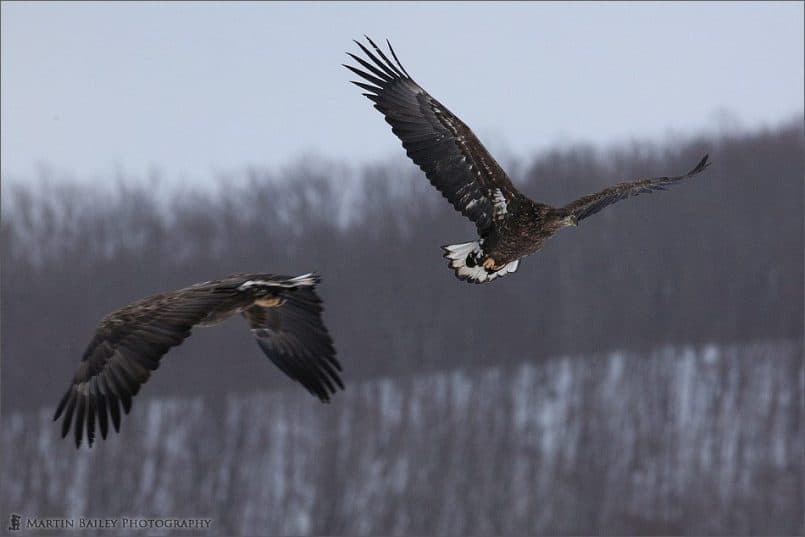
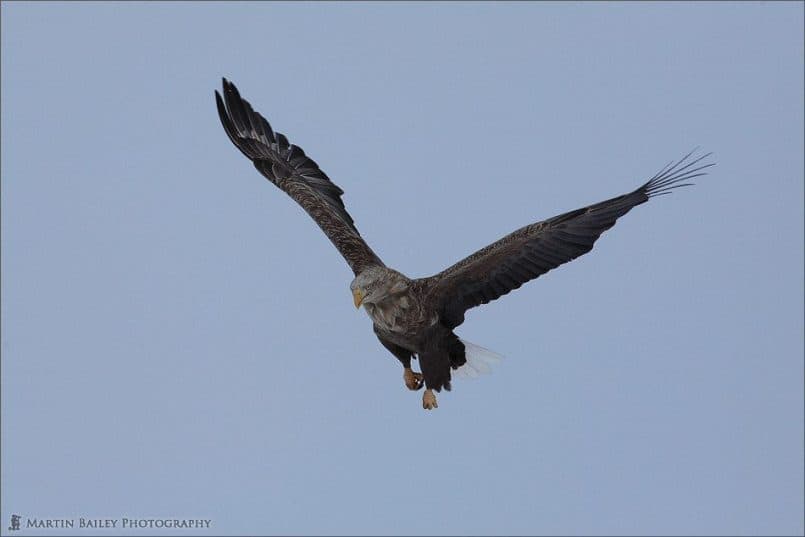
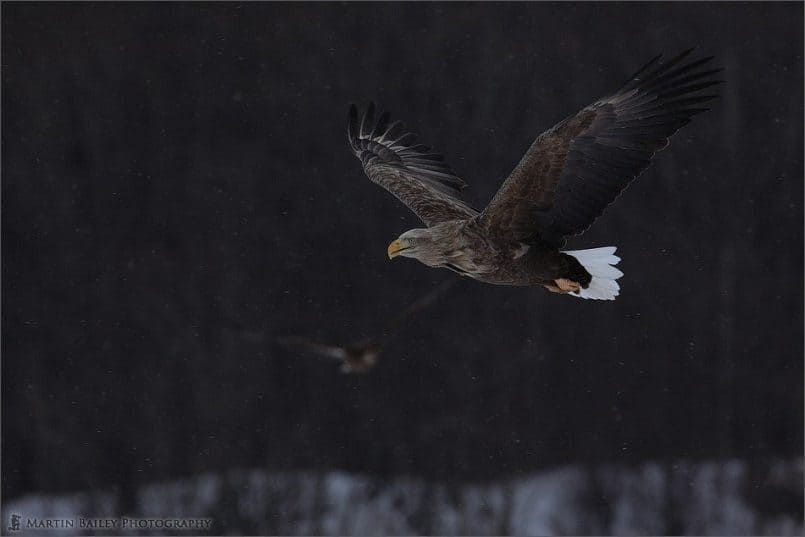


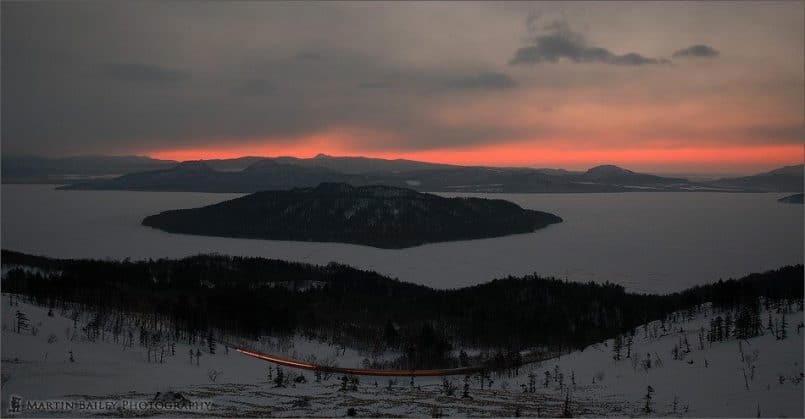
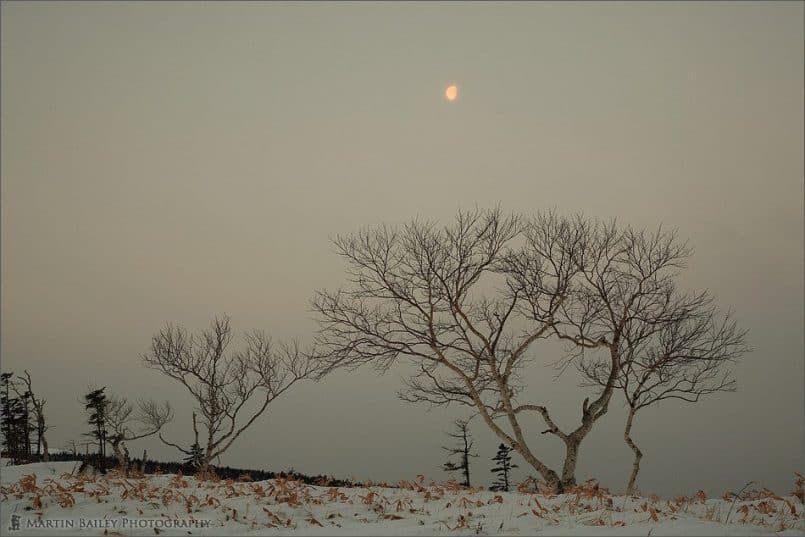

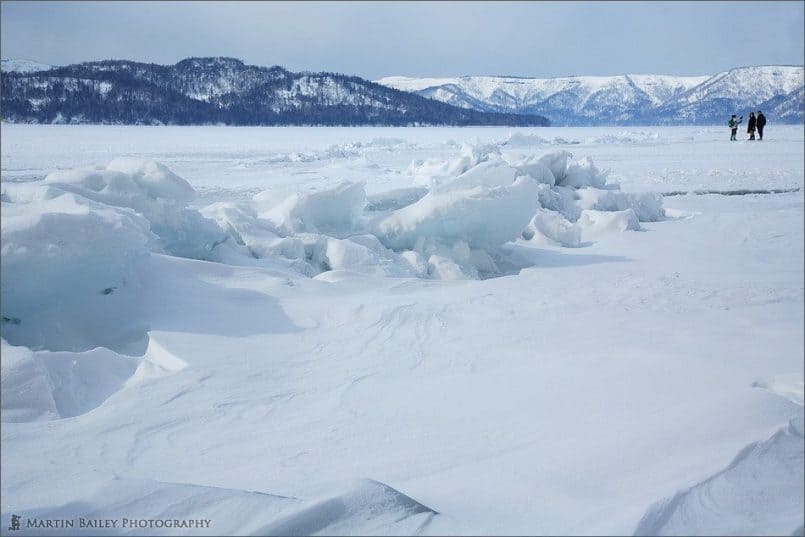


0 Comments